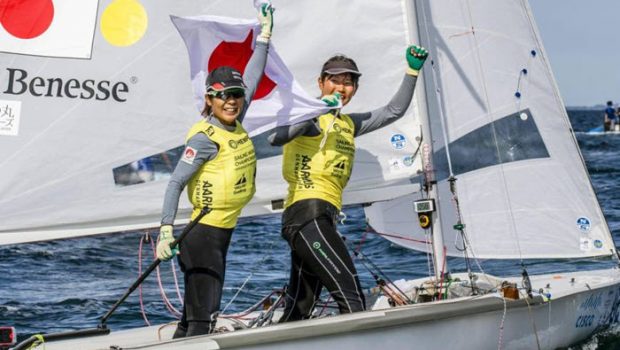Building a better mousetrap
Published on March 13th, 2019
The debate for the sailing competition at the Olympic Games is the source of the equipment used for the ten events. There are three options for the Tokyo 2020 Games:
• A single design built by one manufacturer (Nacra 17, RS:X).
• A single design built by licensed builders (Laser, Laser Radial, 49er, 49erFX).
• A design rule built by Class approved builders (Finn, 470).
Prior to the Los Angles 1984 Games, all boats were based on design rules, but as new classes were introduced to the Olympics, the source of equipment was controlled by the company which had made the investment to launch the boat.
Some believe the old way is the best way, which is to keep open the equipment source so athletes can develop their own best equipment, much like other sports at the Olympics. But this approach can lead to great expense, which is what occurred in the Star Class before it was eliminated after London 2012, and now might be occurring in the 470 Class.
Japan has been focusing hard on their performance in the Men’s and Women’s Two Person Dinghy event, which resulted in the country winning the 2018 Women’s Worlds and runner-up in the 2018 Men’s Worlds, with two other teams finishing in the top ten. And now they want to build a better mousetrap.
Here is the announcement from Yahama Motor, one of eight approved class builders, and a significant Japanese multinational corporation with a very wide range of products:
Yamaha Motor Co., Ltd., and Fujitsu Limited today announced that they will conduct an IoTbased field trial to improve the performance of the 470. The trial will commence from March 13 through April 30, 2019, on Lake Hamana in Shizuoka Prefecture, Japan.
In this field trial, the companies will visualize information such as the dinghy’s inclination and speed, as well as the data on course, by attaching a number of sensors to various parts of the boat and analyzing the sensor data using Fujitsu’s cloud service.
Based on those results, they will specify areas that need adjustment to improve the dinghy’s performance, which will be useful in enhancing both the sailing performance of the dinghy and the sailing skills of the crew.
By repeating this process, in addition to the upgrading of the boat structure and the tuning of mast and sails, users will be able to grasp the impact of crew actions on boat speed, with the goal of guiding users to optimal tuning to deliver even higher performance.
The companies have designated a series of activities including this field trial as Project 470 Sailing Analysis, and they will be jointly promoting the initiative. Under this project, they will build a platform for developing boats with even greater sailing performance, contributing to the further progress of the marine market worldwide.









 We’ll keep your information safe.
We’ll keep your information safe.